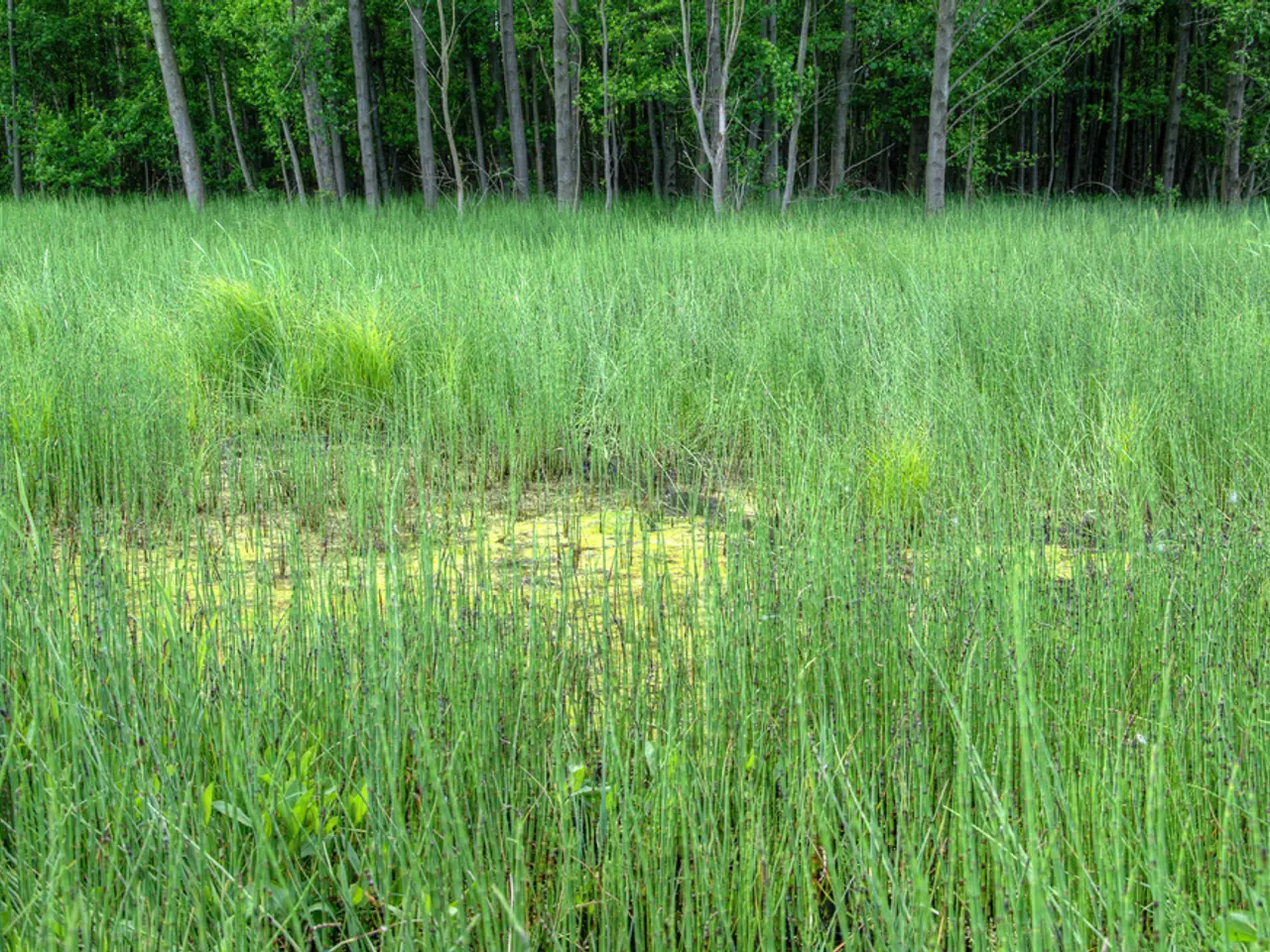Drones Play a Pivotal Role in Civil Engineering: Discovering How Drones Aid Taylor Engineering in Safeguarding and Conserving Coastal Regions
Taylor Engineering Embraces Drones for Enhanced Civil Engineering Projects
Taylor Engineering, a civil engineering firm based in Jacksonville, Florida, has been making waves in the industry by leveraging drone technology for various water environment projects. The firm's drone program, initiated in 2017 with the purchase of a DJI Phantom 4 Pro drone, has since expanded to serve four major purposes: progress and monitoring, site mapping, topographic maps and stockpile volumetry, and marketing.
One of the projects where Taylor Engineering utilised a drone was the Norriego Point Restoration Project, carried out for the Florida Department of Environmental Protection. Drones were employed to monitor the progress of dredging and the beneficial use of sediment, with before and after images captured to document the restored footprint of Norriego Point and the dredging progress.
In another notable project, the Fort Pierce Truck Haul Shore Protection Project, civil engineers from Taylor Engineering designed a beach fill template. Sand from an upland mine was used to construct the beach, and drones provided progress aerials for the project, which were used internally and provided to the client as updates. A topographic map was also created from drone data to compare the actual beach elevation with the project design specifications.
The Fort Pierce Truck Haul Shore Protection Project was executed for the St. Lucie County Erosion District, while the DU-2 Offloading Project was carried out for the Florida Inland Navigation District. In the DU-2 Offloading Project, drones were used to monitor the contractor's offloading progress, document pre- and post-offloading site conditions, and create orthomosaics with Ground Control Points (GCPs) to monitor the volume of material removed from the site.
Beyond construction, agriculture, and inspections, drones in civil engineering are extensively used for land surveying and mapping, environmental monitoring, emergency response, and advanced reality capture including digital twins creation. Drones provide highly accurate and detailed land surveys by producing topographic maps, orthomosaics, and 3D terrain models that greatly speed up and improve the precision of traditional surveying methods, even in difficult terrains.
They also facilitate environmental and conservation efforts by monitoring wildlife populations, habitats, and environmental changes such as deforestation or erosion, aiding restoration projects. In emergency and disaster response, drones rapidly assess damage, locate survivors, and guide responders through thermal imaging and advanced sensors, improving situational awareness and saving lives.
Another civil engineering application is in reality capture where drones integrate with digital tools like building information modeling (BIM) to create digital twins — virtual replicas of sites that aid visualization, risk assessment, and scheduling. Advanced autonomous terrain mapping powered by AI and machine learning enables drones to create precise 3D models and geospatial data to support infrastructure planning and logistics optimization beyond traditional uses, showing potential for expanded civil engineering applications.
LiDAR-equipped drones are increasingly used to generate Digital Terrain Models and Digital Surface Models essential for smart city planning and detailed engineering designs. Thus, drones in civil engineering contribute significantly across surveying, environmental management, emergency response, digital twin creation, and autonomous terrain mapping, enhancing accuracy, safety, and efficiency widely beyond construction, agriculture, and inspection tasks.
William Warren, Staff Geologist and Remote Sensing Practice Area Leader at Taylor Engineering, is the founder of the firm's drone program and the first Part 107-certified pilot on its payroll. The entire fleet of drones at Taylor Engineering consists of versions of the DJI Phantom 4 Pro. This technology has undoubtedly revolutionised the way civil engineering projects are executed and monitored, making Taylor Engineering a pioneer in the field.
- The drone program at Taylor Engineering, initiated by William Warren, the Staff Geologist and Remote Sensing Practice Area Leader, has been instrumental in various water environment projects since its inception in 2017.
- Drones were used in the Norriego Point Restoration Project to monitor the dredging progress and document the restored footprint of Norriego Point, providing before and after images.
- In the Fort Pierce Truck Haul Shore Protection Project, drones provided progress aerials, created a topographic map, and were used for internal updates and client reporting.
- Beyond construction, agriculture, and inspections, drones in civil engineering are essential for land surveying and mapping, environmental monitoring, emergency response, and digital twin creation.
- LiDAR-equipped drones generate Digital Terrain Models and Digital Surface Models, which are crucial for smart city planning and detailed engineering designs.
- Taylor Engineering's use of drones for civil engineering projects, such as the Norriego Point Restoration Project and the Fort Pierce Truck Haul Shore Protection Project, has undoubtedly revolutionized the industry, making them pioneers in this field.




